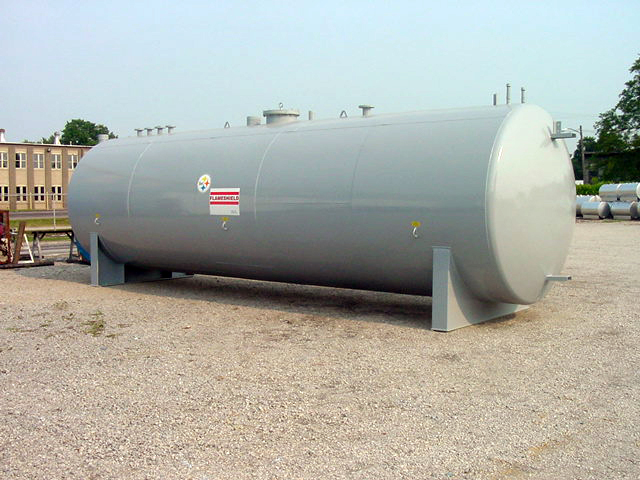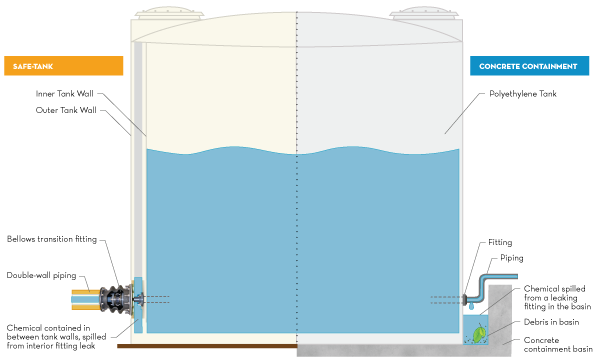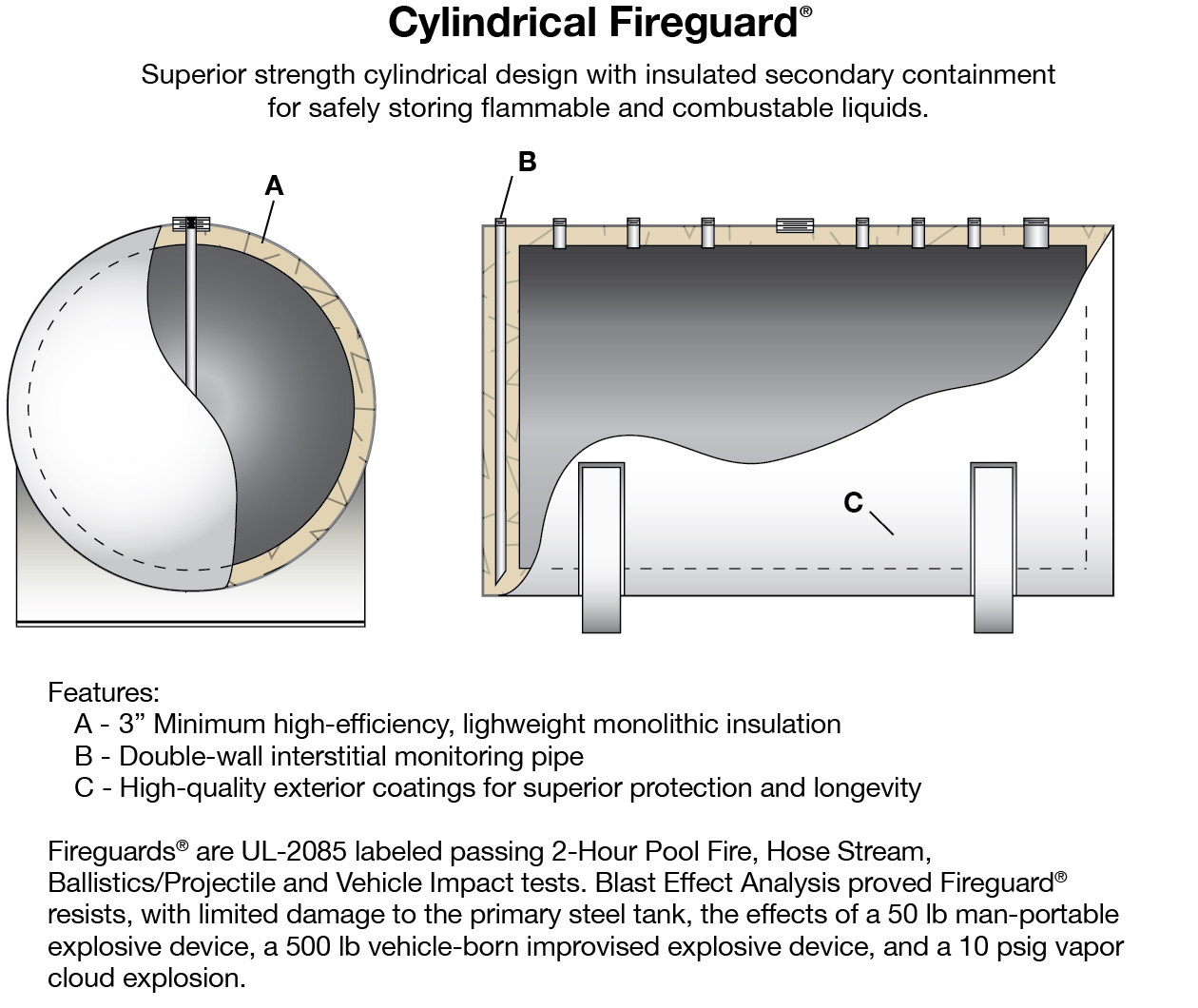Subpart i use and management of containers 40 cfr 264 175 which covers portable storage containers such as 55 gallon drums for hazardous waste and the second in subpart j tank systems 40 cfr 264 193 which covers large stationary containers.
Do double walled tanks require secondary containment.
If the secondary system is open to rainfall the system must be hold at least 4 5 inches of rainfall over the required containment volume.
All double wall tanks are designed with wall thicknesses equal to or greater than that required by astm d 1998 standards.
Facilities with more than one tank must have secondary containment of at least 150 of the largest tank s volume or 10 of the total volume of all containers whichever is greater.
Double wall tanks can be customized by adding seismic zone 4 or 120 mph wind load tie down assemblies leak detection ultrasonic level indicators and tank ladder assemblies.
In some cases it may be cheaper to use a double wall fuel tank.
Owners and operators must inspect the inner wall and interstitial spaces of a shop built double wall ast using industry standards such as the sp001 00 standard for inspection of in service shop fabricated aboveground tanks for storage of combustible.
One of the biggest disadvantages of single wall fuel tanks is that you need the secondary containment.
In most areas the use of a double wall tank with closed containment exempts you from the need to have containment that is over the capapcity of the primary storage tank.
4 2 general secondary containment requirements at a regulated facility all areas and equipment with the potential for a discharge are subject to the general secondary containment provision 112 7 c.
These may include bulk storage containers.
A copy is attached for your reference.
This guidance also clarifies when shop built double walled asts satisfy the applicable secondary containment requirements in the spill prevention control and countermeasure spcc rule found at 40 cfr part 112.
The committee stated that aboveground secondary containment type tanks need not meet the remote impounding and the diking requirements of nfpa 30 if the following conditions are met.
A tank capacity cannot exceed 12 000 gallons.
Double walled tanks are preferable to single wall tanks.
B all piping connections to the tank must be made above the normal maximum liquid level.
Double wall fuel tank.
That can end up costing your business a very serious amount of money.
In areas that get much rain that could mean 150 secondary containment capacity or more.
Diked tanks can provide secondary containment but must be shielded from the rain.
Use of certain double wall aboveground storage tanks asts for secondary containment purposes.
The epa refers to the need for containment and secondary containment in two different areas.









